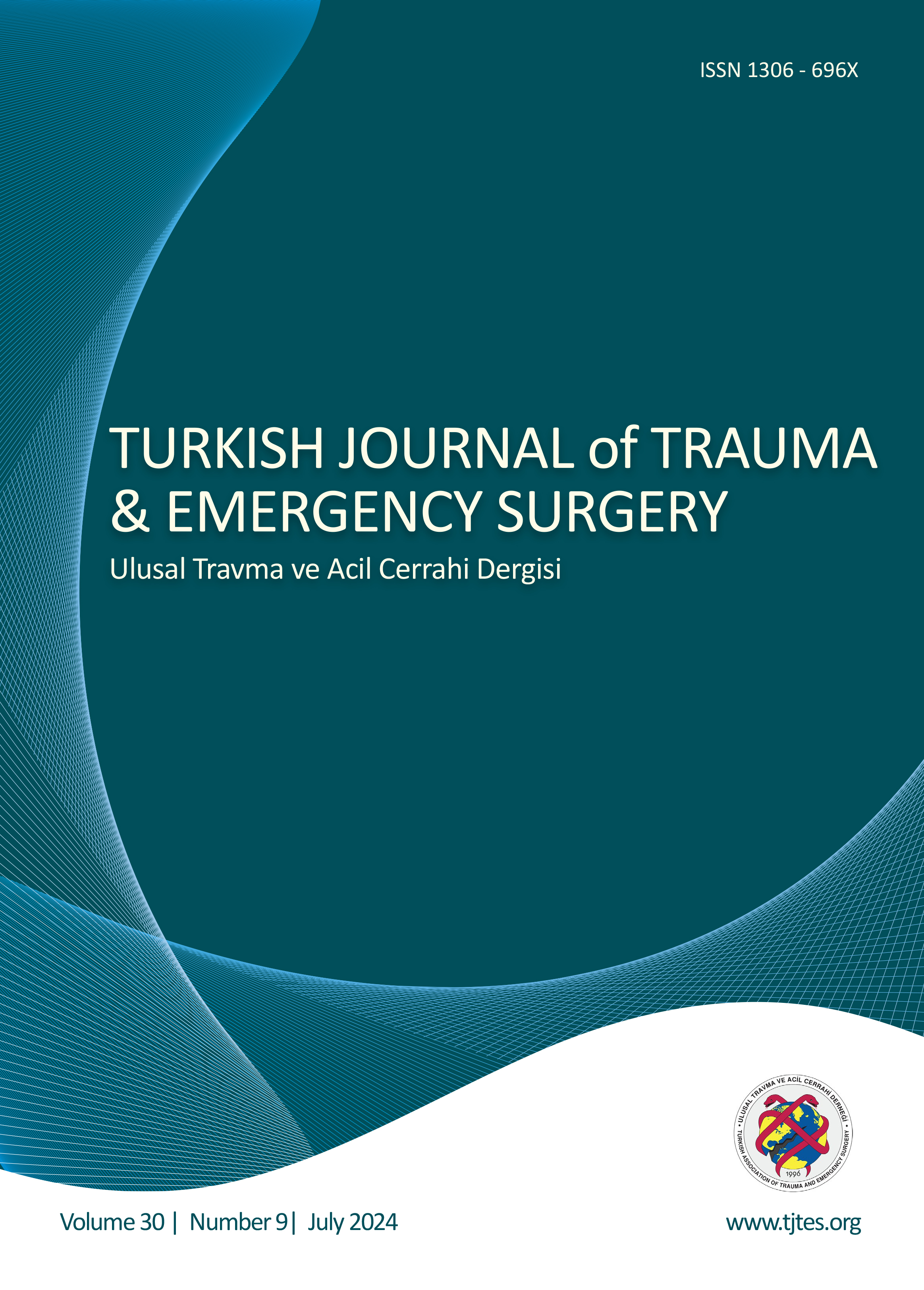Quick Search
The effect of catheter use on vein grafting of a peripheral nerve defect: an experimental study
Alper Mehmet Bayraktar1, Serhat Özbek2, Mesut Özcan2, Behzat Noyan3, İlkin Çavuşoğlu41Çekirge Government Hospital Department Of Plastic And Reconstructive Surgery, Bursa,turkey2Uludağ University Faculty Of Medicine, Department Of Plastic And Reconstructive Surgery, Bursa,Turkey
3Uludağ University Faculty Of Medicine, Department Of Physiology, Bursa,Turkey
4Uludağ University Faculty Of Medicine, Department Of Histology, Bursa,Turkey
BACKGROUND
Since vein grafts have been used in the repair of nerve defects, studies regarding this procedure have accumulated, and after coming into clinical use, it was noticed that there is a problem of collapse in the vein graft.
METHODS
Forty Sprague-Dawley rats were used, divided into five groups. No surgical intervention was performed in the first group. The defect was created in the sciatic nerve in Group 2 and left unrepaired. In Group 3, the defect was repaired with a nerve graft. In Group 4, the defect was repaired with a vein graft, while in Group 5, the repair was performed using a vein graft with an inserted catheter. In order to evaluate functional recovery and nerve regeneration, walking track analysis, electrophysiologic and histomorphometric analyses were done at the end of the 12th week.
RESULTS
Although there were no functional differences between Groups 5 and 4, comparisons regarding nerve conduction velocity demonstrated that the results obtained in Group 5 were better than those in Group 4. When the number of axons on the distal part of the sciatic nerve and mid-segment of the repaired area was taken into account, no significant difference was found between Groups 3 and 5, whereas there was a significant difference between Groups 4 and 5.
CONCLUSION
In our study, it was experimentally shown that the problem of collapse of a vein graft occurring after its use in the reconstruction of a nerve defect can be overcome by placing a catheter into the vein graft. Consequently, this method may eliminate the need for the use of a nerve graft in selected cases.
Keywords: Peripheral nerve injury, nerve defect; vein graft.
Ven grefti ile periferik sinir defektlerinin onarımında kateter kullanımının sinir rejenerasyonuna etkisi: Deneysel çalışma
Alper Mehmet Bayraktar1, Serhat Özbek2, Mesut Özcan2, Behzat Noyan3, İlkin Çavuşoğlu41Çekirge Devlet Hastanesi, Plastik Ve Rekonstrüktif Cerrahi Kliniği, Bursa2Uludağ Üniversitesi Tıp Fakültesi, 2plastik Ve Rekonstrüktif Cerrahi Anabilim Dalı, Bursa
3Uludağ Üniversitesi Tıp Fakültesi Fizyoloji Anabilim Dalı, Bursa
4Uludağ Üniversitesi Tıp Fakültesi Histoloji Anabilim Dalı, Bursa
AMAÇ
Sinir defektlerinin rekonstrüksiyonunda ven greftlerinin kullanılması ile ilgili çalışmaların artması ve bu uygulamanın klinikte kullanıma girmesiyle birlikte, ven greftinin kollabe olma sorununun ortaya çıktığı görülmüştür.
GEREÇ VE YÖNTEM
Çalışmada 40 adet Spraque-Dawley sıçan kullanıldı. Beş gruptan, 1. gruba herhangi bir cerrahi girişim yapılmadı; 2. grubun siyatik sinirinde oluşturulan defekt onarılmadan bırakıldı, 3. grupta defekt sinir grefti ile onarıldı, 4. grupta defekt ven grefti ile 5. grupta ise ven grefti ve katater birlikte kullanılarak onarım yapıldı. Birinci ve ikinci grup kontrol grubu olarak kullanıldı. Fonksiyonel iyileşmeyi, sinir rejenerasyonunu değerlendirmek amacıyla, 12. haftanın sonunda, yürüme analizi, elektrofizyolojik ve histomorfometrik analizler yapıldı.
BULGULAR
Defektin ven grefti ve katater ile onarıldığı grup (grup 5) ile grup 3 ve 4 arasında fonksiyonel açıdan fark bulunmazken, sinir iletim hızı açısından bakıldığında, 5. gruptaki sonuçlar, ven grefti ile onarım yapılan gruptan (grup 4) daha iyi bulundu. Onarım distalinden ve onarım alanının ortasından alınan siyatik sinir kesitlerindeki akson sayısına bakıldığında 3. ve 5. grup arasında fark bulunamazken; 4. ve 5. grup arasındaki fark anlamlıydı.
SONUÇ
Bu çalışma sonucunda, ven grefti ile onarılan periferik sinir yaralanmalarında görülebilen ven grefti kollapsının ven grefti içine kateter yerleştirilmesi ile aşılabileceği ve bu sayede onarımda sinir grefti kullanma ihtiyacının ortadan kalkabileceği deneysel olarak gösterilmiştir.
Anahtar Kelimeler: Periferik sinir yaralanması, sinir hasarı; ven grefti.
Manuscript Language: English




